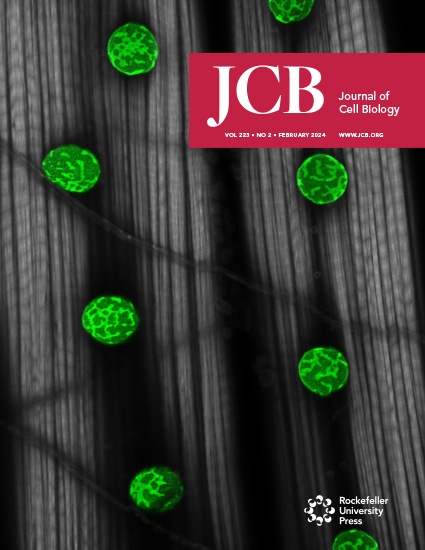PML mutants from arsenic-resistant patients reveal SUMO1-TOPORS and SUMO2/3-RNF4 degradation pathways.
IF 7.4
1区 生物学
Q1 CELL BIOLOGY
引用次数: 0
Abstract
Arsenic effectively treats acute promyelocytic leukemia by inducing SUMO and ubiquitin-dependent degradation of the promyelocytic leukemia (PML)-retinoic acid receptor alpha oncogenic fusion protein. However, some patients relapse with arsenic-resistant disease because of missense mutations in PML. To determine the mechanistic basis for arsenic resistance, PML-/- cells were reconstituted with YFP fusions of wild-type PML-V and two common patient mutants: A216T and L217F. Both mutants were resistant to degradation by arsenic but for different biochemical reasons. Arsenic did not trigger SUMOylation of A216T PML, which failed to recruit the SUMO-targeting ubiquitin ligases RNF4 and TOPORS. L217F PML did respond with increased SUMO2/3 conjugation that facilitated RNF4 engagement but failed to reach the threshold of SUMO1 conjugation required to recruit TOPORS. Thus, neither mutant accumulated the appropriate polyubiquitin signal required for p97 binding. These PML mutants have revealed a convergence of SUMO1, SUMO2/3, TOPORS, and RNF4 that facilitates the arsenic-induced degradation of PML.来自砷抗性患者的PML突变体揭示了SUMO1-TOPORS和SUMO2/3-RNF4降解途径。
砷通过诱导SUMO和泛素依赖性降解早幼粒细胞白血病(PML)-视黄酸受体α致癌融合蛋白,有效治疗急性早幼粒细胞白血病。然而,由于PML的错义突变,一些患者复发为抗砷性疾病。为了确定砷抗性的机制基础,用野生型PML- v和两种常见的患者突变体A216T和L217F的YFP融合重组PML-/-细胞。两种突变体都对砷的降解具有抗性,但由于不同的生化原因。砷不会触发A216T PML的sumo化,从而无法招募sumo靶向的泛素连接酶RNF4和TOPORS。L217F PML确实增加了SUMO2/3结合,促进了RNF4的结合,但未能达到招募TOPORS所需的SUMO1结合阈值。因此,两个突变体都没有积累p97结合所需的多泛素信号。这些PML突变体显示了SUMO1、SUMO2/3、TOPORS和RNF4的趋同,促进了砷诱导的PML降解。
本文章由计算机程序翻译,如有差异,请以英文原文为准。
求助全文
约1分钟内获得全文
求助全文
来源期刊

Journal of Cell Biology
生物-细胞生物学
CiteScore
12.60
自引率
2.60%
发文量
213
审稿时长
1 months
期刊介绍:
The Journal of Cell Biology (JCB) is a comprehensive journal dedicated to publishing original discoveries across all realms of cell biology. We invite papers presenting novel cellular or molecular advancements in various domains of basic cell biology, along with applied cell biology research in diverse systems such as immunology, neurobiology, metabolism, virology, developmental biology, and plant biology. We enthusiastically welcome submissions showcasing significant findings of interest to cell biologists, irrespective of the experimental approach.
 求助内容:
求助内容: 应助结果提醒方式:
应助结果提醒方式:


